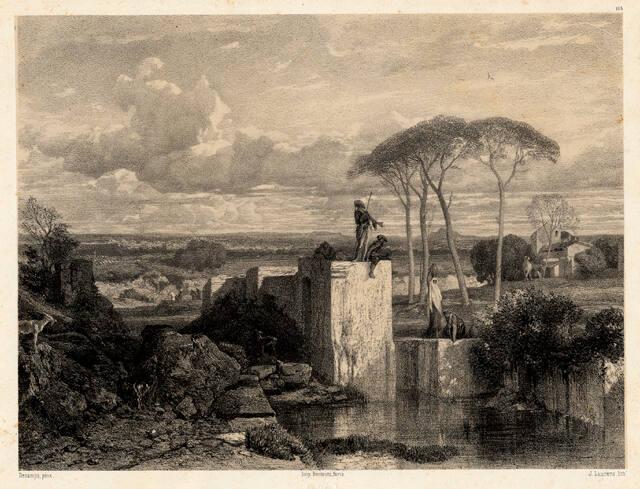J. LAURENS
(b Fourquevaux, Haute-Garonne, 28 March 1838; d Paris, 23 March 1921).
French painter, illustrator and teacher. At an early age he took lessons from a Piedmont painter, Pédoya, who had come to Fourquevaux to decorate the village church. Pédoya was a harsh teacher, and Laurens moved to the nearby Ecole des Beaux-Arts in Toulouse. There he studied under Jean-Blaise Villemsens (1806-59), the professor of sculpture, who took a great interest in him. In 1858 he won the Prix de la Ville de Toulouse, which paid for him to complete his studies in Paris. There he was a pupil first of Alexandre Bida (1823-95) and then of Léon Cogniet. After a single unsuccessful attempt to win the Prix de Rome, he made his début at the Salon in 1863 with the Death of Cato (1863; Toulouse, Mus. Augustins), which already revealed his fascination for historical subjects.
From 1877 to 1880 Laurens worked on decorative paintings for the apse of the Panthéon, Paris: three large panels depicting the dying Ste Geneviève surrounded by devoted admirers. His usual, somewhat harsh, realistic style failed to convey the paintings' intended spirituality. The works were finally put in place in 1882. Numerous public projects followed. In 1888 he decorated the ceiling of the Théâtre de l'Odéon, Paris, and in 1891 started work on decorative panels, featuring scenes from French history, for the Hôtel de Ville in Paris, which were completed in 1898 and displayed in what became known as the Salle de J.-P. Laurens. Overlapping with this was a commission to decorate the Salle de Capitole in Toulouse (1895-9), a project that included such works as Toulouse against Montfort (1899), depicting a symbolic struggle between the lion of Montfort and the lamb of Toulouse.
Meanwhile Laurens continued to paint historical canvases. His later canvases reveal his continued interest in religious subjects, as in such paintings as Interior (1908; Beauvais, Mus. Dépt. Oise), which depicts a dying priest in his cell.
Laurens was also a prolific book illustrator, providing plates for Augustin Thierry's Premier récit des temps mérovingiens (Paris, 1881), Victor Hugo's L'Art d'être grand père (Paris, 1884), Goethe's Faust (Paris, 1885) and other works. For some of his paintings he would work with clay models first in order to obtain the required facial expressions and, though not a sculptor, he used this skill to produce a few portrait medallions (see Thiollier, fig. cf).
Laurens's work seems unconvincingly grandiose, and although there is real drama in many of his paintings their interest lies mainly in their curious subject-matter.
BIBLIOGRAPHY
F. Fabre: Roman d'un peintre (Paris, 1878)
--: Jean-Paul Laurens (Paris, 1895)
R. Muther: The History of Modern Painting, i (London, 1895), pp. 434-5
F. Thiollier: L'Oeuvre de J.-P. Laurens (Paris, 1905)
A. Soubies: Les Membres de l'Académie des beaux-arts depuis la fondation de l'institut, iv (Paris, 1917), pp. 54-9
French Salon Paintings from Southern Collections (exh. cat. by E. M. Zafran, Atlanta, High Mus. A., 1983), pp. 134-5
© Oxford University Press 2007
How to cite Grove Art Online
Person TypeIndividual














